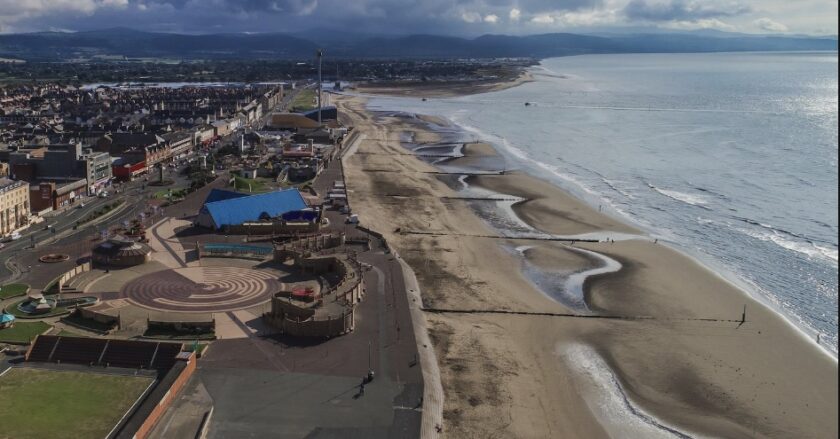Sewage and agricultural run off blamed for deteriorating bathing water at Prestatyn and Rhyl beach’s

Sewage discharges, agricultural runoff and urban drainage have been identified as key contributors to elevated bacteria levels at Prestatyn and Rhyl Central beaches, following disappointing 2024 bathing water classifications.
Rhyl Central Beach has been rated ‘Poor’ for 2025, making it the only beach in North Wales to receive this classification.
Prestatyn Beach, meanwhile, dropped from ‘Excellent’ to ‘Good.’
The classifications, released by Natural Resources Wales (NRW), are based on a four-year dataset and highlight long-standing environmental challenges in the Clwyd catchment area.
Key Sources of Pollution Identified
Rhyl Central’s poor rating is closely tied to its proximity to the River Clwyd, which lies 800 metres west of the beach.
During periods of wet weather, bacteria-laden water from the river is carried toward the shore by incoming tides.
Similarly, Prestatyn Beach is affected by discharges from Rhyl Cut, located three kilometres west, and from the River Clwyd during high flows.
Agricultural runoff remains a major source of pollution in the Clwyd catchment area.
Heavy rainfall washes sediment, nutrients, and animal waste from farmland into rivers and streams.
Sewage discharges and urban drainage further exacerbate the problem, contributing to poor water quality after storms and periods of high rainfall.
Steps Taken to Tackle Pollution
Natural Resources Wales has vowed to tackle the issues at their root by working with local landowners, councils, and other stakeholders to reduce contamination in the Clwyd catchment area.
Over the past year, efforts have included:
- Installing more than 5,000 metres of fencing to keep livestock away from watercourses.
- Creating alternative water sources for livestock by installing 27 water troughs and systems.
- Planting 115 metres of hedgerows along rivers to prevent sediment and nutrient runoff.
These measures have created over 13,000m² of protected riparian zones—natural buffers that improve water quality and biodiversity.
Additionally, NRW has introduced nature-based solutions, such as a pilot scheme in Tremeirchion that uses wetlands to treat sewage.
These initiatives aim to improve overall water quality, benefiting not only Rhyl Central and Prestatyn but other areas impacted by similar challenges.
NRW Calls for Long-Term Collaboration
Lyndsey Rawlinson, NRW Head of Operations for North East Wales, acknowledged the setbacks at Rhyl Central and Prestatyn but reiterated NRW’s commitment to improving water quality through collaboration.
“Making sure our bathing waters are safe and clean is a top priority for us. The recent results for Prestatyn and Rhyl Central are not what we hoped for, but we are fully committed to working closely with partners in an attempt to improve the water quality at both sites,” Rawlinson said.
“Over the past few years, we’ve worked with local landowners to reduce the amount of nutrients, sediment, and animal waste entering rivers like the Clwyd. These efforts have made a difference, but there is still a lot of work to do.
“By working together with partners and landowners, we will try to help address the challenges affecting our waters and take meaningful steps toward long-term improvement. We remain committed to supporting our local communities and protecting our natural environment for future generations.”
Public Health Concerns
The poor classification for Rhyl Central is not only a blow to the town’s reputation as a seaside destination but also raises concerns about the health risks associated with bathing in polluted waters.
Elevated bacteria levels can lead to illnesses, such as gastrointestinal infections and skin irritations, particularly for children and vulnerable individuals.
NRW is reviewing its daily water quality prediction system to ensure that bathers receive accurate and timely warnings during the bathing season.
While the classifications for Rhyl Central and Prestatyn beaches are disappointing, NRW highlighted progress at Marine Lake, which improved from ‘Sufficient’ to ‘Good.’ The lake had received a ‘Poor’ classification in 2022 but benefited from targeted interventions to reduce bacteria levels.
[Photo: Visit Wales]
Spotted something? Got a story? Email: [email protected]
Latest News
